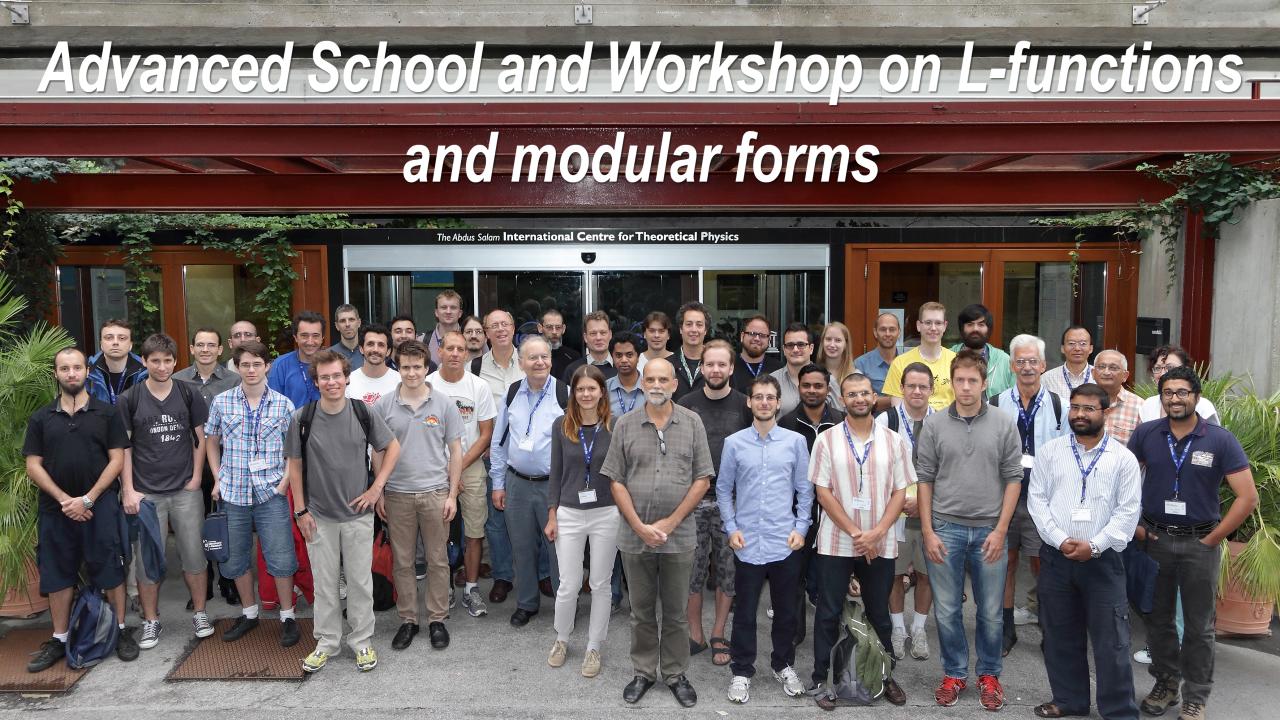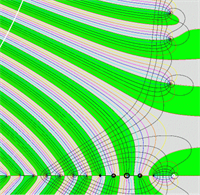
Could we organize mathematics like a social network? A network where mathematical objects have a "home page" and "friends"? What would the home page of the Riemann zeta function look like, for example? What does the Riemann zeta function like to do? Who are its friends?
This is the guiding principle behind the L-functions and Modular Forms Database (LMFDB) project http://www.LMFDB.org.
At the recent "Advanced School and Workshop on L-functions and modular forms" held at  ICTP, co-sponsored by EPSRC, ICTP and the NSF, researchers got together to share their knowledge as well as contribute to the LMFDB. One of the activity's Directors, John Cremona (University of Warwick, UK), explains: "The project consists of a large database, hosted at Warwick, containing a substantial amount of number-theoretical data (for example including over 100 billion zeros of the Riemann Zeta Function, each to 100-bit precision, two million elliptic curves, and much more), allowing different views of the data and showing clearly the links between different mathematical objects, some of which are still only conjectural and all of which are the subject of a large amount of research worldwide. (Image on right showing Phase flow plot of Riemann Zeta function). As well as new mathematical theory, the project involves much algorithmic development, realised and implemented entirely as open source software, so that both the data and the code used to create it and display it is all fully open."
ICTP, co-sponsored by EPSRC, ICTP and the NSF, researchers got together to share their knowledge as well as contribute to the LMFDB. One of the activity's Directors, John Cremona (University of Warwick, UK), explains: "The project consists of a large database, hosted at Warwick, containing a substantial amount of number-theoretical data (for example including over 100 billion zeros of the Riemann Zeta Function, each to 100-bit precision, two million elliptic curves, and much more), allowing different views of the data and showing clearly the links between different mathematical objects, some of which are still only conjectural and all of which are the subject of a large amount of research worldwide. (Image on right showing Phase flow plot of Riemann Zeta function). As well as new mathematical theory, the project involves much algorithmic development, realised and implemented entirely as open source software, so that both the data and the code used to create it and display it is all fully open."
There is also another angle to a social network for mathematics: how mathematics gets done. Traditional mathematics conferences often consist of talk after talk after talk. Increasingly, mathematics meetings, particularly those with a computational component, include brainstorming and problem-solving sessions in small groups, together with coding sessions and informal plenary discussions. These sessions are essentially unplanned beyond a general organization of themes and tasks at the start of each week. In other words, mathematics also progresses as the result of interactions in a social network rather than by the contributions of individuals working in isolation. Participants of the ICTP school really appreciated the time to work on problems and material discussed in the lectures together. In addition, ICTP's global reach meant that the participants came from very distant parts of the world, giving them a unique opportunity to share their common interest face to face.
The LMFDB's main goal is to create and maintain mathematical data (available to the science community at large) while pushing, and hopefully breaking, the boundaries of classical L-functions and modular forms, and exploring their applications to 21st-century mathematics, physics and computer science.
The LMFDB was originally funded by a $1.2M USD FRG grant from the American National Science Foundation. Since 2013 it has been funded by an EPSRC Programme Grant worth £2.2M from the UK, shared between Bristol and Warwick, of which John Cremona is the PI. As well as Bristol and Warwick, the project has a large international team of collaborators and the ICTP as a partner institution. LMFDB workshops have been held at ICTP, the Warwick Mathematics Institute, the University of Bristol, University of Paris VI, the Mathematical Sciences Research Institute (MSRI, Berkeley), the American Institute of Mathematics (AIM, Palo Alto), Arizona State University, and the International Centre for Mathematical Sciences (ICMS, Edinburgh).
















